What to see in Asia
Click from the list below to see that country’s most interesting places. The purpose of this page is to give you a general idea of things you shouldn’t miss out on if you’re traveling in Asia. Everything below is a guideline, what you do in each city or national park is up to you.
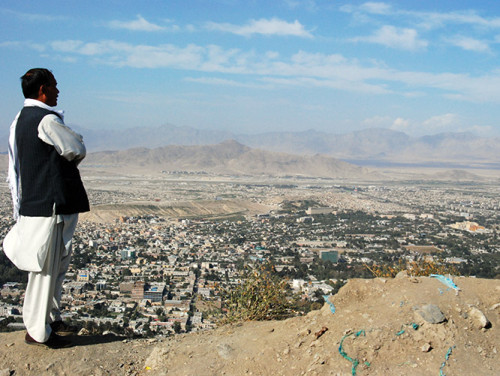 Capital – Kabul – Afghanistan’s capital was once a great city, but after decades of wars and violence it is now largely in ruins and dangerous. A museum built by the Afghan government is a great way to begin your travels by getting an understanding of the historic and current situation in the country . Right outside the museum is an enormous palace and although it is essentially destroyed, it is still an impressive structure and is a reminder of Kabul’s better times.
Capital – Kabul – Afghanistan’s capital was once a great city, but after decades of wars and violence it is now largely in ruins and dangerous. A museum built by the Afghan government is a great way to begin your travels by getting an understanding of the historic and current situation in the country . Right outside the museum is an enormous palace and although it is essentially destroyed, it is still an impressive structure and is a reminder of Kabul’s better times.Bandi I Amir – If you travel almost 10,000 feet up in Afghanistan’s mountains, you’ll find five great lakes created by the natural fault lines that are called the King’s Dam by locals. The mountains themselves aren’t too impressive, resembling enormous piles of dirt, but the deep blue lakes are an oasis in this valley.
 Herat – Afghanistan’s third largest city, Herat is the best place in the country to experience Afghan culture and see some of its most important historic sites. Some places of interest are the citadel, created by Alexander the Great, the Friday Mosque, one of the most beautiful in the country, and dozens of ancient cemeteries and shrines that hold the tombs of past Afghan Kings and other important leaders.
Herat – Afghanistan’s third largest city, Herat is the best place in the country to experience Afghan culture and see some of its most important historic sites. Some places of interest are the citadel, created by Alexander the Great, the Friday Mosque, one of the most beautiful in the country, and dozens of ancient cemeteries and shrines that hold the tombs of past Afghan Kings and other important leaders.Minaret of Jam – Unknown to the world a hundred years ago, the tower of Minaret of Jam was Afghanistan’s first world heritage site. Afghanistan doesn’t have many high rise buildings, so imagine the surprise of finding the ancient 20 story tall tower in a remote part of the country. The tower was constructed of baked bricks over 800 years ago and it is believed to be the location of the ancient summer capital of King Ghurid’s dynasty.
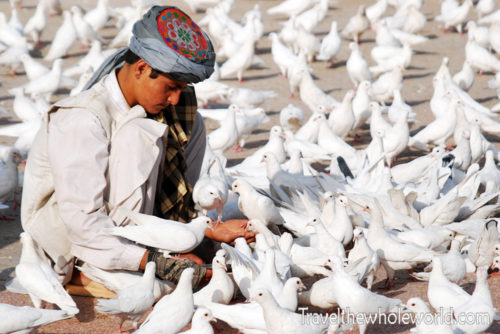 Mazar-e-Sharif – Located not too far from the border of Tajikistan, Afghanistan’s fourth largest city is also said to be the country’s most beautiful. It is far away from most of the violence that plagues Afghanistan today in the south. The city is most famous for the blue mosque, called Hazrat Ali in Farsi, and is believed by Shi’ites to contain the tomb of the Prophet Ali. Also in the area is a former city built by Alexander the Great known as Balkh, where the 2,000 year old city walls still stand today.
Mazar-e-Sharif – Located not too far from the border of Tajikistan, Afghanistan’s fourth largest city is also said to be the country’s most beautiful. It is far away from most of the violence that plagues Afghanistan today in the south. The city is most famous for the blue mosque, called Hazrat Ali in Farsi, and is believed by Shi’ites to contain the tomb of the Prophet Ali. Also in the area is a former city built by Alexander the Great known as Balkh, where the 2,000 year old city walls still stand today.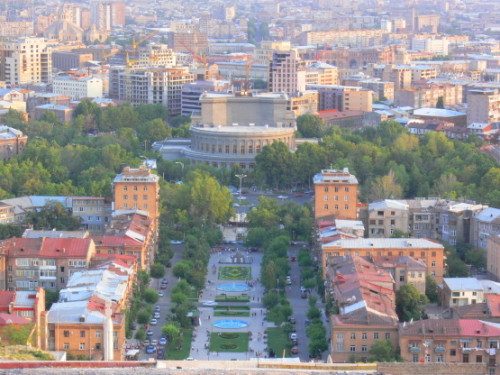 Capital – Yerevan – Aside from being the capital of the world’s first Christian county, Yerevan also is one of the oldest cities in the world. To share its history with the rest of us, Armenia has over 20 museums in its capital, including one about the Armenian genocide that took places in 1915. Yerevan is a safe and walkable city that you can explore on foot both day and night. A good place to start your visit would be the heart of the city, Republic Square.
Capital – Yerevan – Aside from being the capital of the world’s first Christian county, Yerevan also is one of the oldest cities in the world. To share its history with the rest of us, Armenia has over 20 museums in its capital, including one about the Armenian genocide that took places in 1915. Yerevan is a safe and walkable city that you can explore on foot both day and night. A good place to start your visit would be the heart of the city, Republic Square.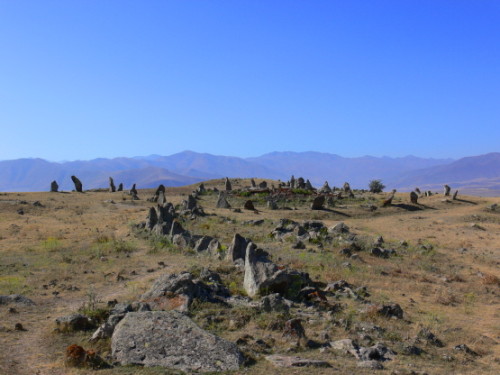 Karahunj – Karahunj was built using large stones to help study astronomy. It is similar to Stone Hedge, but it is much older. No precise age has ever been determined, but Karahunj is estimated to be anywhere from 3,500 to 7,000 years old. Karahunj isn’t impressive to the eye, but it makes up for this with its creative design. In addition to making the rock formations, holes carved out of the stones that you perfectly align with the stars during the right time of year.
Karahunj – Karahunj was built using large stones to help study astronomy. It is similar to Stone Hedge, but it is much older. No precise age has ever been determined, but Karahunj is estimated to be anywhere from 3,500 to 7,000 years old. Karahunj isn’t impressive to the eye, but it makes up for this with its creative design. In addition to making the rock formations, holes carved out of the stones that you perfectly align with the stars during the right time of year.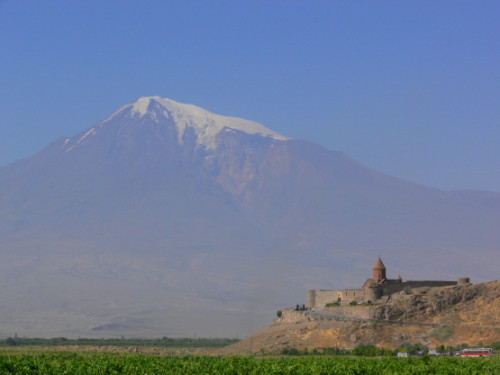 Khor Virap – Literally meaning deep pit, Khor Virap earned its name from the role it played when the entire nation of Armenia converted to Christianity. This huge monastery complex had a pit where a Christian named Gregory the Illuminator was thrown inside and stayed there for 13 long years. The events that took place here finally led the King to give up Paganism and officially declare Armenia a Christian nation.
Khor Virap – Literally meaning deep pit, Khor Virap earned its name from the role it played when the entire nation of Armenia converted to Christianity. This huge monastery complex had a pit where a Christian named Gregory the Illuminator was thrown inside and stayed there for 13 long years. The events that took place here finally led the King to give up Paganism and officially declare Armenia a Christian nation.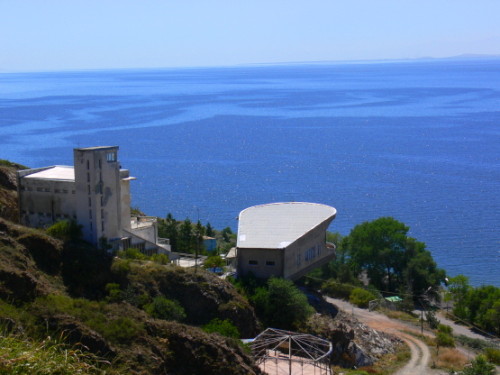 Lake Sevan – As Armenia is a landlocked country with no access to the seas and oceans, Lake Sevan is where people go to cool off in the hot summer. At almost 7,000 feet (2,000 meters) above sea level, the lake is one of the highest in the world. Lake Sevan is the perfect place to relax on the beach or to dine in at the many fine restaurants. If you feel like being more active then you can go boating, fishing, or even rent jet skis!
Lake Sevan – As Armenia is a landlocked country with no access to the seas and oceans, Lake Sevan is where people go to cool off in the hot summer. At almost 7,000 feet (2,000 meters) above sea level, the lake is one of the highest in the world. Lake Sevan is the perfect place to relax on the beach or to dine in at the many fine restaurants. If you feel like being more active then you can go boating, fishing, or even rent jet skis!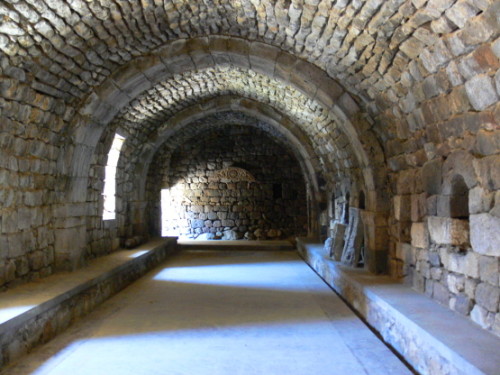 Tatev Monastery – This 9th century monastery and fortress is one of the most beautiful in the world. It was built on the edge of a steep cliff along the Vorotan Canyon giving a very dramatic first impression. This is a popular tourist destination as there are many rooms to explore and ancient stories to be told. Several of the rooms have large open windows to give you excellent views straight into the forested valley and canyons below.
Tatev Monastery – This 9th century monastery and fortress is one of the most beautiful in the world. It was built on the edge of a steep cliff along the Vorotan Canyon giving a very dramatic first impression. This is a popular tourist destination as there are many rooms to explore and ancient stories to be told. Several of the rooms have large open windows to give you excellent views straight into the forested valley and canyons below.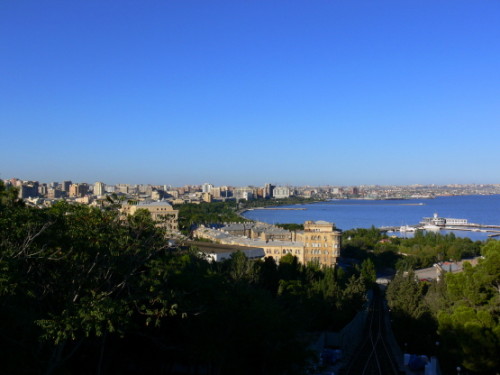 Capital – Baku – Azerbaijan’s capital and largest city is Baku, located on the Absheron Peninsula on the Caspian Sea. The city surprisingly is very westernized and friendly, and probably holds the best night life in the region. The city is divided into its modern section and Old Baku, which is surrounded by a large stone wall. There is plenty to do from visiting historical buildings, riding jet skiis in the Caspian Sea, to going to a night club along the waterfront.
Capital – Baku – Azerbaijan’s capital and largest city is Baku, located on the Absheron Peninsula on the Caspian Sea. The city surprisingly is very westernized and friendly, and probably holds the best night life in the region. The city is divided into its modern section and Old Baku, which is surrounded by a large stone wall. There is plenty to do from visiting historical buildings, riding jet skiis in the Caspian Sea, to going to a night club along the waterfront.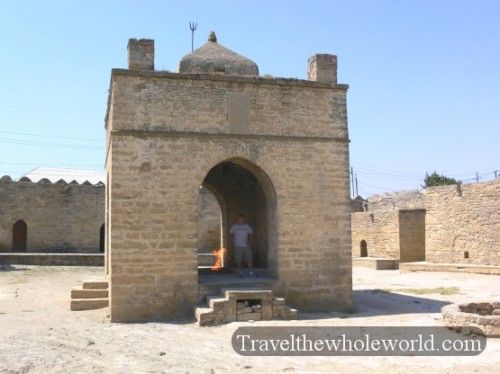 Atesgah – Built by followers of the ancient religion of Zoroastrianism, the temple of Atesgah, also known as the Fire Temple, was built around a natural gas leak in the ground. The surrounding buildings were used as a hotel for the Indian traders on the silk trail. Parts of the building have been converted to a museum with a deeper explanation of the culture and beliefs of Zoroastrians. What makes the temple more sacred is it is one of three remaining in the world.
Atesgah – Built by followers of the ancient religion of Zoroastrianism, the temple of Atesgah, also known as the Fire Temple, was built around a natural gas leak in the ground. The surrounding buildings were used as a hotel for the Indian traders on the silk trail. Parts of the building have been converted to a museum with a deeper explanation of the culture and beliefs of Zoroastrians. What makes the temple more sacred is it is one of three remaining in the world.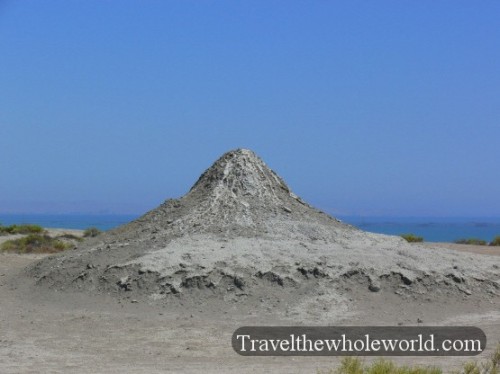 Mud Volcanoes – Azerbaijan is also called the land of fire because of its abundant natural resources such as oil and natural gas. Another interesting phenomenon are Azerbaijan’s mud volcanoes, which literally spit out cold mud and have most have the traditional cone shape of real volcanoes. There are about 800 mud volcanoes in the world, but over half of them are found in Azerbaijan.
Mud Volcanoes – Azerbaijan is also called the land of fire because of its abundant natural resources such as oil and natural gas. Another interesting phenomenon are Azerbaijan’s mud volcanoes, which literally spit out cold mud and have most have the traditional cone shape of real volcanoes. There are about 800 mud volcanoes in the world, but over half of them are found in Azerbaijan.Bahrain
Capital – Manama – The modern city of Manama is the capital of the ancient island of Bahrain. The city’s modern skyline is made up of skyscrapers and large hotels. Most visitors start exploring Bahrain by visiting the National Museum, which has everything you could want to know about the country’s 7,000 year old history. As a Muslim country mosques are found all over Bahrain, and like most non Muslims are forbidden to enter. An exception is Bahrain’s largest mosque, the Al-Fatih which gives non Muslims a unique opportunity to enter.
Barbar Temple – Most are surprised to find that the ancient temples in Barbar were actually constructed several thousand years ago. The first of three temples is dated back to 3000BC, the second came in 2500BC and the last around 2000BC. After standing for 4 to 5 thousand years not much is left of the original towers. The Barbar temples are still a popular place to visit, and the foundations of the temple complex can be fun to explore.
Muharraq Island – Just a few miles away from the mainland, Muharraq Island is likely to be your point of entry as you land at the international airport. Many people immediately head out to the capital or other areas and leave a lot of Muharraq unexplored. The island has history going back to 5,000 years and was once dominated by the Greeks who converted the locals to Nestorian Christianity. Muharraq is also a good place to see Bahrain’s past, as it hasn’t been modernized like the rest of the country.
Royal Tombs – Among the 80,000 burial mounds that are found throughout Bahrain, the Royal Tombs standout as the most impressive. Located outside the capital in the village of A’ali, the burial mounds stand up to 50 feet in height and 150 feet in diameter. There has not been any compelling evidence yet, but many believe the Royal Tombs to be the burial place of previous Kings who ruled the island nation.
Bangaladesh
Capital – Dhaka – Capital of the most densely populated country in the world, Dhaka is a busy and congested city with a metropolitan area of some 12 million people. The 400 year old city has an old Dhaka section with hundreds of mosques and temples, and an old fort that was left unfinished by a previous ruler. The city’s main commercial area is known as Motijheel, and another popular place to visit in the city is the waterfront called Sadarghat.
Cox’s Bazar – ‘The world’s longest sandy beach’ stretches out 120 kilometers along the Bay of Bengal in southeastern Bangladesh. This beach should be one of the best in Asia, but conservative locals have preserved it and prevented any large development in the area. With 120 kilometers of sand, there are plenty of places to sunbathe in swim, either near a town or out in a remote area alone.
Mainimati Ruins – Bangladesh’s most significant historical site, the ruins of Mainimati provide an opportunity for archaeologists to excavate the area and find secrets to their past cultures. With over 50 Buddhist sites found throughout the ruins, this place was once very important to the people of Bangladesh during 800A.D. to 1300A.D. Visiting the ruins are fairly easy, as the site is accessible and includes a large museum sharing artifacts and detailed history of the site.
Somapuri Vihara – An enormous 27 acre monastery, Somapuri Vihara is one of the biggest attractions of Bangladesh. Built in the 8th century, Somapuri Vihara is one of the largest Buddhist monasteries in the world. In 1985 it became a world heritage site because of its history and hundreds of temples and buildings covering 21 acres.
Sundarbans – The jungle of the Sundarbans is a large area filled with crocodiles, river dolphins and even tigers. The Sundarbans is the largest mangrove forest in the world and is famous for its 400 wild Royal Bengal Tigers. The Royal Bengal Tigers are famous for eating people, and usually kill and eat about 100 to 250 people a year, making a trek through Sundarbans a true adventure.
Bhutan
Capital – Thimphu – Less than 50 years old, Thimphu already has about 100,000 residents after King Jigme Dorje Wangchuk decided to relocate the capital. Thimphu still maintains its traditional Buddhist atmosphere by law and other than Pyongyang it is the only capital in Asia without traffic lights. Many cultural events take place in Thimphu and the nearby city of Paro, where one of the most picturesque monasteries in the world, the Taktshang, is built on the wall of a mountain face.
Bumthang District – This central district of Bhutan has more historical sites and ancient temples than any other district in the country. The Jambay Lhakhang is said to be one of over 100 temples built some 1,500 years ago to ward off an evil ogress. Bumthang district is also a place where some of Bhutan’s most interesting cultural events and festivals take place. Many dances in traditional clothing as well as mythical costumes take place in Thangbi Mani.
Punakha – The former capital of Bhutan, Punakha is located at a lower altitude than the rest of the country and has a warmer temperature in the winter with hot summers. As a result, the Punakha Dzong, Bhutan’s largest fortress, was built at this location and is the winter home of the leading Buddhist body. Despite the lower altitude of Punakha, the city is still surrounded by 20,000 foot peaks and some amazing scenery.
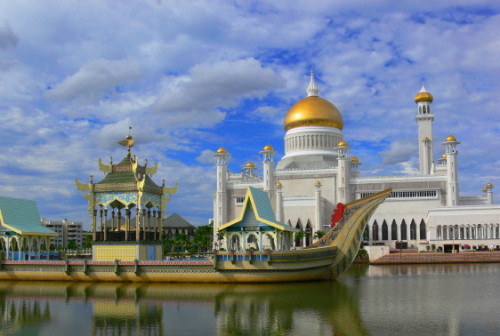 Capital – Bandar Seri Begawan – Brunei’s capital and only real city, Bandar Seri Begawan, is ruled by a Muslim king who resides in the largest residential palace in the world. The capital includes many other mosques and some Buddhist temples which are open to foreigners on non service days. The largest mosque in the far east is in the capital and is named after the current Sultan. Many luxurious accommodations are available in Brunei such as one of the Sultan’s former palaces.
Capital – Bandar Seri Begawan – Brunei’s capital and only real city, Bandar Seri Begawan, is ruled by a Muslim king who resides in the largest residential palace in the world. The capital includes many other mosques and some Buddhist temples which are open to foreigners on non service days. The largest mosque in the far east is in the capital and is named after the current Sultan. Many luxurious accommodations are available in Brunei such as one of the Sultan’s former palaces.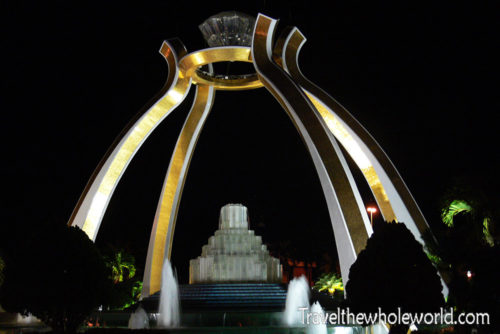 Jerudong Park – A gift from the King to the people of Brunei, Jerudong park is an amusement park larger than Hong Kong’s Disney Land.Unfortunately it is usually empty nowadays and has a ghost town like atmosphere. If you ever dreamed of having an amusement park to yourself, make Jerudong Park next trip. Most people make a quick stop to the park and spend a few hours at the most. The park is still a unique place in the world and a symbol of Brunei’s wealth so plan a visit.
Jerudong Park – A gift from the King to the people of Brunei, Jerudong park is an amusement park larger than Hong Kong’s Disney Land.Unfortunately it is usually empty nowadays and has a ghost town like atmosphere. If you ever dreamed of having an amusement park to yourself, make Jerudong Park next trip. Most people make a quick stop to the park and spend a few hours at the most. The park is still a unique place in the world and a symbol of Brunei’s wealth so plan a visit.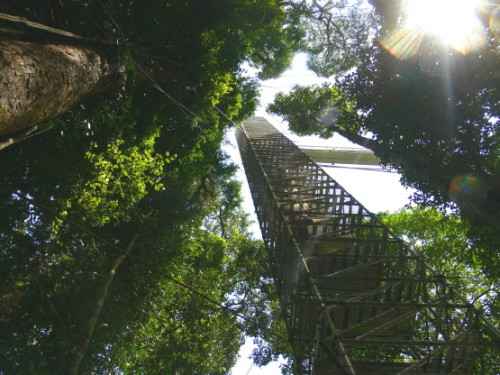 Ulu Temburong – Brunei’s best national park is the Ulu Temburong rainforest located in the country’s eastern enclave. Because it is physically separated by Malaysia, the best way to reach the Ulu Temburong rainforest is by boat. Hiking and overnight camping are possible in the rainforest, and many board and canopy walks have been built for great views. Some unique wildlife lives here such as flying snakes and frogs, and the endemic proboscius monkeys famous for their strange noses.
Ulu Temburong – Brunei’s best national park is the Ulu Temburong rainforest located in the country’s eastern enclave. Because it is physically separated by Malaysia, the best way to reach the Ulu Temburong rainforest is by boat. Hiking and overnight camping are possible in the rainforest, and many board and canopy walks have been built for great views. Some unique wildlife lives here such as flying snakes and frogs, and the endemic proboscius monkeys famous for their strange noses.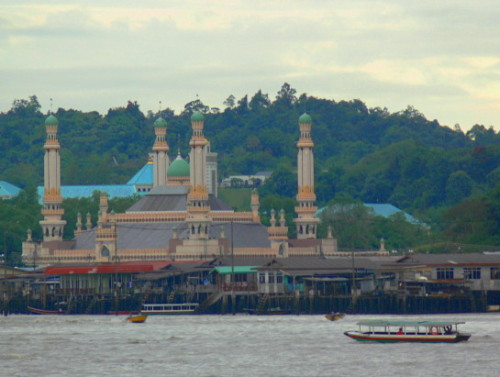 Water Village – One of the best attractions in Brunei is the water village known as Kampong Ayer, where houses and shops are built on stilts high above the water. The first Europeans to visit the water village several centuries ago called it the Venice of the East. Like Venice, the only way to explore the village is by taking water taxis or using the network of planks and boardwalks that connect houses and shops. Over 30,000 people make their home in the water village.
Water Village – One of the best attractions in Brunei is the water village known as Kampong Ayer, where houses and shops are built on stilts high above the water. The first Europeans to visit the water village several centuries ago called it the Venice of the East. Like Venice, the only way to explore the village is by taking water taxis or using the network of planks and boardwalks that connect houses and shops. Over 30,000 people make their home in the water village.Burma
Capital – Naypyidaw – At the very end of 2005, the capital of Burma was abruptly moved from the city of Yangon to the unheard of town of Naypyidaw. Not much is known about the new capital, as Naypyidaw is of course mostly centered around the country’s militaristic regime so few locals or travelers have any reason to visit. Even for travelers who are interested in a visit, air fare is only available to Burmese generals, so be prepared for a long 10 hour journey by bus or train. One good place to start a visit are the three giant sculptures of former Burmese Kings that were recently built in the new capital.
Bagan Ruins – Along the banks of the Ayerwaddy river are the largest collections of Buddhist temples, pagodas, and other ruins in the world. The history of the ruins begins back in the 11th century, when the Bagan’s region was experiencing their golden age. For nearly 200 years Buddhists thrived in this ancient city until they were attacked and over run by invading Mongols.
Mount Popa – This picturesque extinct volcano rises nearly one mile into the sky in the center of the country. At the top of Mt. Popa is the Brumese famous Taungkalat shrine which was dedicated to the Mahagiri Nats spirits. Mt. Popa and the shrine are very important to the people of Burma, with many visiting from around the country. In order to climb to the shrine, you’ll be required to remove your shoes and socks and climb the 777 steps to the top.
Yangon – Burma’s most interesting city, Yangon was the former capital of the country beginning in the 19th century when it was under control of the British. As a result of European influence, Yangon has more colonial buildings than any other city in southeast Asia. The city has dozens of religions sites such as Buddhist, Christian and even a Synagogue. The Shwedagon Paya is the most important religious site in the country and is a good venture point for exploring Yangon’s monuments, markets, gardens and Inya Lake.
Cambodia
Capital – Phnom Penh – Cambodia’s most populous and wealthiest city, Phnom Penh is home to 1 out of 7 Cambodians. When it was ruled by Pol Pot in the mid to late 1970s, many sites in the city such as the Tuol Svay high school were turned into prisons and torture centers. Today, the city has seem huge economic growths, with modern districts and high rise buildings being built in the capital. Many museums are in Phnom Penh to show the city’s history, and there are dozens of religions wats and the Royal Palace to be explored.
Ankor Wat – Ankor Wat is perhaps southeast Asia’s most famous religious temple. It was built in the 12th century by King Suryavarman II as a Hindu temple. Over the centuries, it was eventually converted to a Buddhist temple or wat. Ankor Wat has a European castle like entrance, with a 2.2 mile wall surrounding the grounds in addition to a large moat. The temple itself is one of the largest and most important in southeast Asia, and is Cambodia’s greatest national treasure.
Killing Fields of Choeung Ek – Between 1974 and 1979 one of the most brutal regimes the world has ever seen ruled Cambodia known as Khmer Rouge. The Khmer Rouge regime killed anyone who they believed might have been sympathetic to the previous Cambodian government or anyone who had any ties to organizations outside the country. Nearly 2.2 million lives were lost, and many mass graves were dug in the “Killing Fields”. A monument Choeung Ek provides a memorial to one of humanity’s greatest tragedies in the past century.
Kirirom National Park – Translated as “happy mountain”, which was named by King Monivong in the 1930s, Kirirom is a relatively small area of 130 square kilometers, but its dense mountain forests are packed with wild life. With its elevation around 2,200 feet, animals that make Kirirom national park their home include elephants, tigers, and even the rare spotted linsang, a type of belly crawling cat that is sometimes even mistaken for a snake!
Siem Reap – One of Cambodia’s most popular destinations, this city has many important cultural and historic places for the country. The city is focused around the Old Market where colonial buildings are found. Apsara dance performances are also popular in the city and easily found. Since the country was devastated by land mines, the Cambodia land mine museum is another must see.
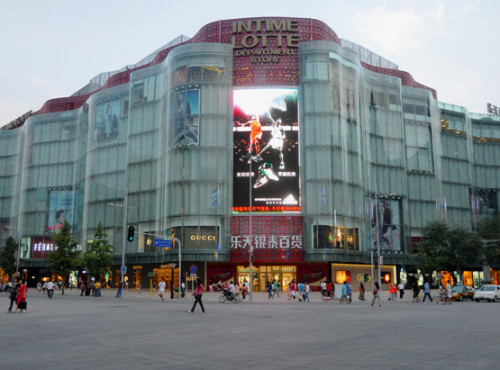 Capital – Beijing – As the capital of the world’s most populous country, Beijing is one of several cultural and historical centers in China. Its history can be traced back over 3,000 years to the to the first city state of Ji. Beijing became the capital of China when the country became united under the first emperor over 2,000 years ago. The most famous sites of Beijing include the Forbidden City, Tiananmen Square, and the Temple of Heaven. Aside from the countless historical and religious places to visit, the Beijing metropolitan area sprawls close to a massive 7,000 square miles with 16 districts to explore!
Capital – Beijing – As the capital of the world’s most populous country, Beijing is one of several cultural and historical centers in China. Its history can be traced back over 3,000 years to the to the first city state of Ji. Beijing became the capital of China when the country became united under the first emperor over 2,000 years ago. The most famous sites of Beijing include the Forbidden City, Tiananmen Square, and the Temple of Heaven. Aside from the countless historical and religious places to visit, the Beijing metropolitan area sprawls close to a massive 7,000 square miles with 16 districts to explore!Guilin – The dramatic scenery of the Yangtze River against the towering Nan mountains draws thousands of both national and international tourists to Guilin. For a mid size city, Guilin has a surprising amount of attractions ranging from one of Asia’s largest aquariums to a theme park to several festivals and native shows. The real reason to visit Guilin is to see the surrounding beauty, best done by stopping by the small town of Yangshuo and taking a small traditional boat down the Yangtze River.
Shanghai – With a population close to six million, Shanghai is China’s own Tokyo or New York City, which has quickly grown to the country’s economic capital in just 200 short years. The city even has it’s own Manhattan, which is known as Pudong to locals. In Pudong is where you’ll find all the modern marvels such as the home of the Shanghai stock exchange, their iconic Oriental Pearl Tower, and the Shanghai World Financial Center. The remaining districts of Shanghai range from old traditional areas to the western and upscale French Concession district.
Tibet – Considered an independent nation by many foreigners, Tibet has a unique and distinct culture from the rest of China. Mostly famous for its location several thousand meters up in the Himalayans and its deep and peaceful Buddhist culture, Tibet is easily a favorite for most world travelers. The picturesque monasteries such as the incredible Potala Palace never fail to fascinate visitors. With Mt. Everest and the largest canyons in the world both located in Tibet, the country has some of the best outdoor activities.
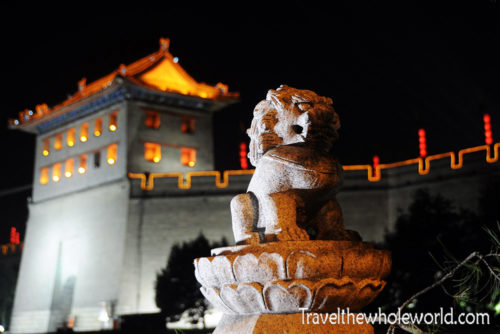 Xian – A city that is over 3,000 years old and having served the capital for 13 different dynasties, a visit to Xian should be mandatory for all travelers. Fortunately the Xi’an is tourist friendly, and it’s quite easy to rent a bike and explore the city on your own. Xian has the world’s largest city wall, China’s first mosque, and plenty of Pagodas, ancient temples and other sites to be explored. One of Xian’s most famous treasures are the terracotta warriors, an ancient life size army made out of stone.
Xian – A city that is over 3,000 years old and having served the capital for 13 different dynasties, a visit to Xian should be mandatory for all travelers. Fortunately the Xi’an is tourist friendly, and it’s quite easy to rent a bike and explore the city on your own. Xian has the world’s largest city wall, China’s first mosque, and plenty of Pagodas, ancient temples and other sites to be explored. One of Xian’s most famous treasures are the terracotta warriors, an ancient life size army made out of stone. Capital – Dili – Becoming the country’s capital in 2002, Dili has made a remarkable recovery from the war with Indonesia and working hard to become recognized by the rest of the world. The civil war that followed East Timor’s independence further devestated this tiny nation, but the recent stability and enormous gains in security make the country safe enough for visitors. Some of the most interesting sites to visit are the museums of independence.
Capital – Dili – Becoming the country’s capital in 2002, Dili has made a remarkable recovery from the war with Indonesia and working hard to become recognized by the rest of the world. The civil war that followed East Timor’s independence further devestated this tiny nation, but the recent stability and enormous gains in security make the country safe enough for visitors. Some of the most interesting sites to visit are the museums of independence.Atauro Island – Just north of East Timor’s capital, Atauro Island offers some of the best eco tours and most tranquil beaches in the country. The island is only about 100km2, but it has excellent scuba diving, bird watching, and even a mountain just under 1,000 meters to hike. Ataura Island is also a great place for cultural experiences, such as learning how to ride in a dug out canoe or fish with natives.
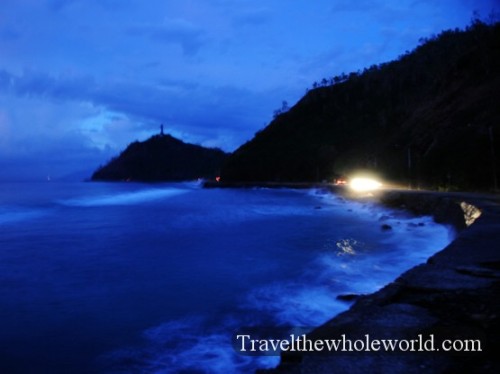 Cape Fatucama – East Timor’s mini Rio De Janerio, Cape Fatucama has many similarities between the famous Brazilian city. Fatucama is formed by large steep tropical mountains descending into the sea and is surrounded by beautiful beaches on both sides. Every Friday night, festivals take place here with dancing music, and traditional local food up for sale. Also like Rio, Cape Fatucama even has a large statue of Jesus that was inspired by Brazil’s Christ the Redeemer.
Cape Fatucama – East Timor’s mini Rio De Janerio, Cape Fatucama has many similarities between the famous Brazilian city. Fatucama is formed by large steep tropical mountains descending into the sea and is surrounded by beautiful beaches on both sides. Every Friday night, festivals take place here with dancing music, and traditional local food up for sale. Also like Rio, Cape Fatucama even has a large statue of Jesus that was inspired by Brazil’s Christ the Redeemer.Com – Like the rest of East Timor, Com offers great snorkeling and scuba diving at its beach. Com is the countries only mainland beach resort, with many facilities to accommodate travelers and water sport enthusiasts. The small village provides a good and easy weekend getaway for travelers and workers in the capital.
 Capital – Tbilisi – As the capital of the land where Europe meets Asia, Tbilisi is full of many religions, races and cultures. The city is one of the few places where you can find ancient mosques built right next to synagogues who lived in peace for hundreds of years. Tbilisi was founded in 5 A.D, so needless to say it comes with lots of history and has many attractions. Some include the Sameba which is one of the largest orthodox churches in the world, freedom square, and the Metekhi church.
Capital – Tbilisi – As the capital of the land where Europe meets Asia, Tbilisi is full of many religions, races and cultures. The city is one of the few places where you can find ancient mosques built right next to synagogues who lived in peace for hundreds of years. Tbilisi was founded in 5 A.D, so needless to say it comes with lots of history and has many attractions. Some include the Sameba which is one of the largest orthodox churches in the world, freedom square, and the Metekhi church.Batumi – On the eastern Black Sea, Georgia’s biggest port city is rapidly growing from the large investments of other nations. Luxurious hotels are being built along the sea and its quickly becoming a major port not just for Georgia but also the entire Caucasus region. The subtropical city is dotted with palm trees and not far away are nice beaches and scuba adventures for those who visit in the hot summer.
 Borjomi – The resort city of Borjomi is located in the mountains next to the giant Borjomi Kharaguali national park. The area is famous for its spring water which is the country’s number one export, and locals believe the springs themselves have healing powers. The national park has lots of cabins for rent and lots of wildlife to find. In the winter skiing is very popular, and with its large mountains and many ski runs, even attempted to be the host of the 2014 olympics.
Borjomi – The resort city of Borjomi is located in the mountains next to the giant Borjomi Kharaguali national park. The area is famous for its spring water which is the country’s number one export, and locals believe the springs themselves have healing powers. The national park has lots of cabins for rent and lots of wildlife to find. In the winter skiing is very popular, and with its large mountains and many ski runs, even attempted to be the host of the 2014 olympics. Gori – Founded by one of Georgia’s greatest kings in the 11th century, Gori is a very old city and rich in history. The most popular attraction of the city the birthplace of Joseph Stalin. The small humble home that Stalin was born and raised is still preserved and is open for tours. A large museum dedicated to the Soviet leader is located right by his home, and includes several of his famous possessions such as his armored train that transported him all over the Soviet Union.
Gori – Founded by one of Georgia’s greatest kings in the 11th century, Gori is a very old city and rich in history. The most popular attraction of the city the birthplace of Joseph Stalin. The small humble home that Stalin was born and raised is still preserved and is open for tours. A large museum dedicated to the Soviet leader is located right by his home, and includes several of his famous possessions such as his armored train that transported him all over the Soviet Union. Vardzia – In 1185 the cave city of Vardzia was built during the Kingdom of Georgia’s golden age. The city was carved out of the mountains and had 13 floors and over 6,000 rooms. A hundred years after its construction, a large earthquake ripped the mountain in half exposing the city. Vardzia still continued to be inhabited for several hundred years, and after the city was converted to Christianity, large Christian frescos and a church was built inside the city that is still visible today.
Vardzia – In 1185 the cave city of Vardzia was built during the Kingdom of Georgia’s golden age. The city was carved out of the mountains and had 13 floors and over 6,000 rooms. A hundred years after its construction, a large earthquake ripped the mountain in half exposing the city. Vardzia still continued to be inhabited for several hundred years, and after the city was converted to Christianity, large Christian frescos and a church was built inside the city that is still visible today.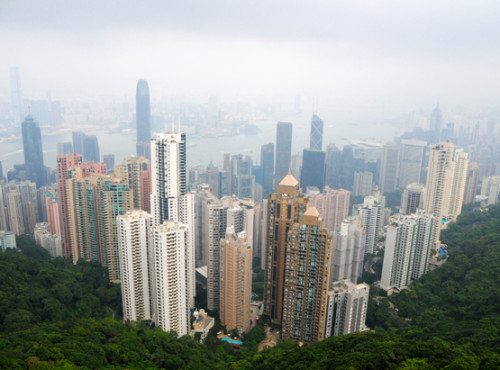 Capital – Hong Kong – The world’s most vertrical city lives on an island just south of the Chinese mainland. Hong Kong is one of the largest and safest cities in the world, and attracts both international businesses and travelers who come here to both work and marvel at this economic powerhouse. The city has plenty of islands to explore, their own Disney World, lots of night life to choose from, and a mix of western and eastern cultures.
Capital – Hong Kong – The world’s most vertrical city lives on an island just south of the Chinese mainland. Hong Kong is one of the largest and safest cities in the world, and attracts both international businesses and travelers who come here to both work and marvel at this economic powerhouse. The city has plenty of islands to explore, their own Disney World, lots of night life to choose from, and a mix of western and eastern cultures. Capital – New Delhi – India’s capital boasts a population of nearly 14 million people, and is full with so much history and culture it’s almost impossible to begin listing all the possiblities. Obvious places to visit include the Taj Majal which is a day trip west of the city, tNew Delhihen famous Red Fort, Akshardham Temple, Humayun’s Tomb, Gandhi’s memorial and countless other places. During your exploration of New Delhi, you’re likely to find yourself taking auto rickshaws, navigating crowded back alleys, and stopping at random restaurants and markets.
Capital – New Delhi – India’s capital boasts a population of nearly 14 million people, and is full with so much history and culture it’s almost impossible to begin listing all the possiblities. Obvious places to visit include the Taj Majal which is a day trip west of the city, tNew Delhihen famous Red Fort, Akshardham Temple, Humayun’s Tomb, Gandhi’s memorial and countless other places. During your exploration of New Delhi, you’re likely to find yourself taking auto rickshaws, navigating crowded back alleys, and stopping at random restaurants and markets.Bandhavgarh National Park – Located in central India, Bandhavgarh national park is dominated by rocky hills and green valleys dense with wildlife. As a matter of fact Bandhavgarh is famous in India for having the highest concentration of tigers in the world and it was in these forests that the first white tiger was ever captured. Many other large animals live in the park such as a species of sloth bear, various deer, monkeys, jackals and even leopards.
Goa – Unfortunately many of India’s beaches by large cities have horrible reputations for being covered in waste and filth. Goa beach that is located on India’s western coast on the other hand is known for its clean beaches, wildlife sanctuaries, and wide range of culture and hospitality. The beach is somewhat touristy, but the natural beauty and ocean make up for it. Since Goa is a popular destination there are plenty of options for night life, restaurants, and accommodations.
Himalayas – The Indian Himalayas offer travelers, hikers, and climbers challenges of all sorts such as simple treks to climbing Kanchenjunga, the world’s third highest mountain. For the more common hiker, there are countless trails that reach altitudes over 5,000 meters and have beautiful views of the surrounding valleys and glaciated peaks. There is virtually no dangerous wildlife in these mountains, but some unique species to look out for includes the Lammergeier, Tahr and the Snow Leopard.
Mumbai – Formerly known as Bombay, the city Mumbai has reinvented itself by modernizing its downtown and skyline and becoming one of the largest commercial hubs in the world. Citizens of Mumbai aren’t the least bit shy, and you are just as welcome to travel to their upper class downtown areas as you are to the sprawling slums. India’s largest city has all sorts of entertainment, international restaurants, cultural shows and festivals.
 Varanasi – This city is actually best avoided by sensitive travelers with a weak stomach or those who are very superstitious. Varanasi is truly one of the most unique cities in the world, and no where else on earth will you find yourself in an urban environment with the population so comfortable with the dead. The Ganges River passes through the city, and in this river is where people drink water, use the restroom, bathe, and also release their dead. The city is built directly up to the river with steps called ghats descending into the water where dozens of temples and places of worship are filled by locals.
Varanasi – This city is actually best avoided by sensitive travelers with a weak stomach or those who are very superstitious. Varanasi is truly one of the most unique cities in the world, and no where else on earth will you find yourself in an urban environment with the population so comfortable with the dead. The Ganges River passes through the city, and in this river is where people drink water, use the restroom, bathe, and also release their dead. The city is built directly up to the river with steps called ghats descending into the water where dozens of temples and places of worship are filled by locals. Capital – Jakarta – Indonesia’s capital is one of Southeast Asia’s largest cities, and has several districts that sprawl out for miles in all directions. Most visitors will need a lot of time to see the city, not because it has some much to offer but mostly because it has some of the worst traffic in the world! The central district is where you’ll find all the national monuments and government buildings such as the Presidential Palace and the famous Monas. Other districts hold all the museums, nightlife and endless shopping areas.
Capital – Jakarta – Indonesia’s capital is one of Southeast Asia’s largest cities, and has several districts that sprawl out for miles in all directions. Most visitors will need a lot of time to see the city, not because it has some much to offer but mostly because it has some of the worst traffic in the world! The central district is where you’ll find all the national monuments and government buildings such as the Presidential Palace and the famous Monas. Other districts hold all the museums, nightlife and endless shopping areas.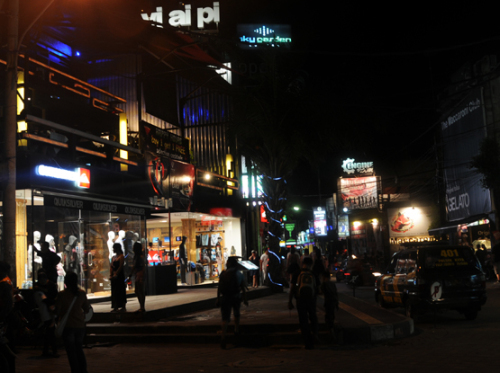 Bali – The island of Bali is over 93% Hindu in a land that is the most populous Muslim country in the world. The more relaxed Hindi culture has given Bali an international reputation for its more liberal exotic beaches with beach front villas, great night life with the country’s best bars and clubs and all types of accommodations for both backpackers and luxury travelers. The island is full of adventure with volcanoes to climb, elephant rides and even white water rafting.
Bali – The island of Bali is over 93% Hindu in a land that is the most populous Muslim country in the world. The more relaxed Hindi culture has given Bali an international reputation for its more liberal exotic beaches with beach front villas, great night life with the country’s best bars and clubs and all types of accommodations for both backpackers and luxury travelers. The island is full of adventure with volcanoes to climb, elephant rides and even white water rafting.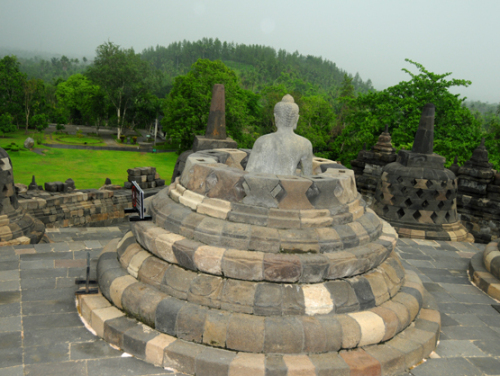 Borobudur – Over two million stones were used to construct the the Mahayana Buddhist temple in the 9th century. The temple has a pyramid like structure with 6 square levels making up the base and then followed by three circular levels at the top that have dozens of Buddhist statues. The temple was believed to be abandoned after about 600 years of use and is now Indonesia’s largest tourist attraction. Other Buddhists pilgrims still visit Borobudur where they celebrate the annual holiday of Vesak.
Borobudur – Over two million stones were used to construct the the Mahayana Buddhist temple in the 9th century. The temple has a pyramid like structure with 6 square levels making up the base and then followed by three circular levels at the top that have dozens of Buddhist statues. The temple was believed to be abandoned after about 600 years of use and is now Indonesia’s largest tourist attraction. Other Buddhists pilgrims still visit Borobudur where they celebrate the annual holiday of Vesak.Komodo Island – Just one of over 17,500 islands that make up Indonesia, Komodo island attracts tourists who come here for some adventure. Scuba diving is one of the most popular activities with people looking for marine life such as whale sharks, manta rays, seahorses and several other exotic species. Komodo national park which includes a few other surrounding islands was created to protect the Komodo dragon, the largest and most powerful lizard in the world.
 Capital – Tehran – Iran’s capital is a modern metropolis with over 14 million people living in the city and its suburbs. Tehran is green during the spring and summer while its winters can leave the city in deep snow. This modern and safe city is known for its young, open-minded population who have the same hobbies as many westerners. The Shah’s former residence, countless museums, palaces, and national icons such as the Azadi tower are popular places to visit.
Capital – Tehran – Iran’s capital is a modern metropolis with over 14 million people living in the city and its suburbs. Tehran is green during the spring and summer while its winters can leave the city in deep snow. This modern and safe city is known for its young, open-minded population who have the same hobbies as many westerners. The Shah’s former residence, countless museums, palaces, and national icons such as the Azadi tower are popular places to visit. Esfahan – Iranian’s proudly claim that Esfahan is the most beautiful city in Iran and one of the most beautiful cities in the world and commonly refer to it as Nesf-e-Jahan, which means translate as half the world. The city is packed with Persian architecture which includes dozens of mosques, enormous palaces and several beautiful bridges that are over 500 years old. Esfahan is home to several well kept gardens and beautiful walks along the Zayandehrood river.
Esfahan – Iranian’s proudly claim that Esfahan is the most beautiful city in Iran and one of the most beautiful cities in the world and commonly refer to it as Nesf-e-Jahan, which means translate as half the world. The city is packed with Persian architecture which includes dozens of mosques, enormous palaces and several beautiful bridges that are over 500 years old. Esfahan is home to several well kept gardens and beautiful walks along the Zayandehrood river.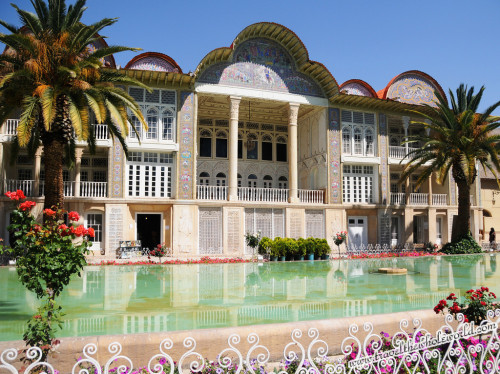 Shiraz – Like Esfahan, Shiraz is also a major cultural center in Iran with many historic buildings and important places of worship. The famous medieval Iranian poet Hafez was born in Shiraz and is buried in a tomb in the heart of the city. Shiraz is also Iran’s most romantic city; throughout Shiraz you’ll find the country’s most beautiful gardens with famous lines of poetry often engraved in the city’s ancient buildings.
Shiraz – Like Esfahan, Shiraz is also a major cultural center in Iran with many historic buildings and important places of worship. The famous medieval Iranian poet Hafez was born in Shiraz and is buried in a tomb in the heart of the city. Shiraz is also Iran’s most romantic city; throughout Shiraz you’ll find the country’s most beautiful gardens with famous lines of poetry often engraved in the city’s ancient buildings. Yadz – Largely considered to be home of the world’s first major monotheist religion, Yazd shares the history of Zoroastrianism and is one of the few places in the world that has a practicing population. The Zoroastrian temples and remains are scattered throughout the city making Yazd one of the few places remaining to learn about this ancient religion. The culture of Yazd is also noticeably unique compared to the rest of Iran, a visit here will make you feel like you’ve stepped back a few hundred years.
Yadz – Largely considered to be home of the world’s first major monotheist religion, Yazd shares the history of Zoroastrianism and is one of the few places in the world that has a practicing population. The Zoroastrian temples and remains are scattered throughout the city making Yazd one of the few places remaining to learn about this ancient religion. The culture of Yazd is also noticeably unique compared to the rest of Iran, a visit here will make you feel like you’ve stepped back a few hundred years. Persepolis – Persepolis was the cultural capital of ancient Persia, one of the world’s first major empires. Founded in 500 BCEa, the city has long been in ruins but has been well preserved considering the passing of 2,500 years. Towering columns, detailed reliefs, and several buildings are still in good condition making this the best place in the world to see the “City of Persians”.
Persepolis – Persepolis was the cultural capital of ancient Persia, one of the world’s first major empires. Founded in 500 BCEa, the city has long been in ruins but has been well preserved considering the passing of 2,500 years. Towering columns, detailed reliefs, and several buildings are still in good condition making this the best place in the world to see the “City of Persians”.Iraq
Capital – Baghdad – Once one of the greatest cities in the middle east if not the world, Baghdad has suffered greatly since the reign of Saddam Hussein followed by the US invasion in 2003. In the greater Baghdad area is the remains of the ancient city of Babylon, and still standing is the ancient Arch of Ctesiphon. There are almost an endless amount of historical places to visit in Baghdad, but the city is also an important place for Iraqi culture and many are surprised by all the performing arts and institutions the city has to offer.
Kurdistan – The northern part of Iraq is made up of Kurdistan which offers a completely different experience from other parts of the country. Even Kurdish people self proclaim their area to be the ‘other side’ of Iraq. This largely mountainous and peaceful part of Iraq is a great place for hiking with points up to 11,000 feet and dozens of popular waterfalls in the region.
Mosul – Mosul is located right on the border of Kurdistan in northern Iraq, and is known for being one of Iraq’s most educated cities. The University of Mosul is one of the largest in the middle east with a huge medical program. Mosul also has the highest number of Christians than any Iraqi city and holds the tombs of several important people from the Old Testament. Another impressive site nearby is the ancient Temple of Hatra, ruins inside the remains of a city founded by the Seleucid Empire, and one of the 10 lost cities of Tayyab.
Ur – Known in the bible as Ur of the Chaldees, this city was once the capital of the Sumeria civilization, and continued to flourish during the following centuries. The ‘man of faith’ from the Christian bible, or the Islamic prophet Abraham was said to be born in Ur of the Chaldees. The Great Ziggurat of Ur still stands in the city and is one of the largest temples built by the Sumerians. The Great Ziggurat of Ur was dedicated to the Moon God and stands over a 100 feet tall with a large base of 210 feet by 150 feet.
Israel
Capital – Jerusalem – The most holy city in the world, Jerusalem is an important city to Judaism, Christianity and Islam. The old city in Jerusalem has ancient synagogues, churches and mosques and thousands of years of history. The western part of Jerusalem is dominated by Jewish religions and traditions, while eastern Jerusalem is home to Christians and Muslims. Some sites not to miss are the Garden Tomb where many believe Jesus was resurrected, Damascus Gate, and Mt of Olives which has tombs of ancient prophets and priests from all three religions.
Dead Sea – 1,388 feet below sea level and located on the border of Jordan and Israel, the dead sea holds many geological world records. On land, it’s the lowest point on earth, the sea itself is the saltiest in the world, so much that no life lives in the sea other than bacteria and fungus. The salt water content is also high enough that people will float naturally because of the unusual buoyancy. The surrounding landscape is filled with wildlife such as camels, the Arabian leopard, jackals, foxes, and more.
Haifa – Another ancient and historic city in Israel, Haifa comes with its own landmarks such as the Cave of Elijah which is another location of importance to all three major religions. Aside from the historical part of Haifa, most travelers and locals enjoy the boardwalks, cafes and restaurants and some of the best beaches in Israel.
Tel Aviv – Israel’s biggest city, Tel Aviv is packed with high rise buildings, modern districts and neighborhoods and easy access to beaches. The Azrieli Center towers are a famous landmark in the city and give great views of Tel Aviv. Old Jaffna and Rabin Square are both famous places that should be visited. The rest of your time can be spent in the Dizengoff district, Azriely Lookout, or the nightlife and restaurants in Rothschild Boulevard.
 Capital – Tokyo – As the world’s biggest and safest city, Tokyo is a destination fun for everyone. The only drawback is the city is very crowded and expensive, with some apartments being the size of an average American’s living room. This enormous city is split up into many districts that could take weeks to explore. You can expect to find everything from expensive car shows, high tech robot museums, ancient Japanese shrines, and to the party scene of Roppongi.
Capital – Tokyo – As the world’s biggest and safest city, Tokyo is a destination fun for everyone. The only drawback is the city is very crowded and expensive, with some apartments being the size of an average American’s living room. This enormous city is split up into many districts that could take weeks to explore. You can expect to find everything from expensive car shows, high tech robot museums, ancient Japanese shrines, and to the party scene of Roppongi.Hokkaido – Japan’s northern most island, Hokkaido is a very popular place to go skiing and snowboarding for Japanese because of its large mountains and cold climate. Hokkaido is probably the best place in Japan to experience the great outdoors. For those who prefer the city life, the capital of Hokkaido is the large city of Sapporo.
 Hiroshima – Hiroshima became infamous to the world after the first atomic bomb was dropped in the heart of the city during world war two. The radiation has cleared and the city has since rebuilt itself. Two buildings that survived the atomic bomb are still standing, and on the exact location where the bomb was dropped is now a memorial and a museum known as Peace Park. In the center is an eternal flame that will be extinguished when the world has rid of all nuclear weapons.
Hiroshima – Hiroshima became infamous to the world after the first atomic bomb was dropped in the heart of the city during world war two. The radiation has cleared and the city has since rebuilt itself. Two buildings that survived the atomic bomb are still standing, and on the exact location where the bomb was dropped is now a memorial and a museum known as Peace Park. In the center is an eternal flame that will be extinguished when the world has rid of all nuclear weapons. Kyushu – The island of Kyushu is southwest of Japan’s mainland, but is close enough to be linked with bridges. Kyushu is a large island with many famous sites such as Nagasaki, the second city in Japan where the atomic bomb was dropped. Japan’s most active volcano, Sakurajima, is almost constantly smoking and is located at the very southern part of the island. Some attractions are the largest city on the island Fukuoka, the famous dormant volcano Mt. Aso, and the monkey temple.
Kyushu – The island of Kyushu is southwest of Japan’s mainland, but is close enough to be linked with bridges. Kyushu is a large island with many famous sites such as Nagasaki, the second city in Japan where the atomic bomb was dropped. Japan’s most active volcano, Sakurajima, is almost constantly smoking and is located at the very southern part of the island. Some attractions are the largest city on the island Fukuoka, the famous dormant volcano Mt. Aso, and the monkey temple.Okinawa – Sometimes described as Japan’s Hawaii, Okinawa is a large tropical island that is a couple hours flight south of Tokyo. Not only is the climate very different, but the culture is also very different from mainland Japan as well. Okinawa was a key island in world war two and the site of Japan’s biggest battles on the homeland. Scuba diving here is also said to be one of the top ten places in the world, if you don’t have your license you are in luck, Okinawa has some of the cheapest diving classes.
Capital – Amman – Jordan’s capital and largest city of Amman is located in the northwestern part of the country, but provides a good base in the country for travelers. Although the city isn’t a famous travel destination, there are plenty of citadels, mosques and cathedrals, and Roman places to explore. The western part of Amman is known for its bars and nightlife, and there are several different neighborhoods throughout the capital that have great local cuisine.
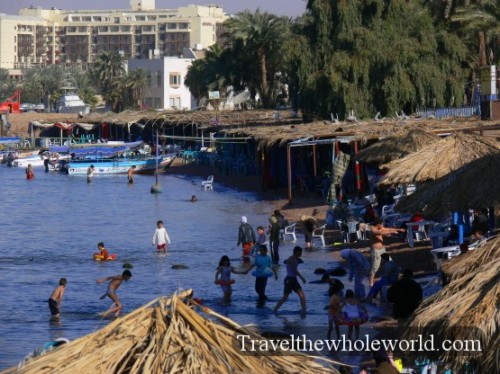 Aqaba – The city of Aqaba is Jordan’s largest port located on the Red Sea. The city has many places to go shopping and it’s duty free so it’s a great place to go on a shopping spree and avoid paying any taxes. Aqaba is a nice peaceful town with many Jordanians coming here to go swimming and enjoy the sea. Scuba diving is also available from Aqaba as the Red Sea is one of the best places in the world.
Aqaba – The city of Aqaba is Jordan’s largest port located on the Red Sea. The city has many places to go shopping and it’s duty free so it’s a great place to go on a shopping spree and avoid paying any taxes. Aqaba is a nice peaceful town with many Jordanians coming here to go swimming and enjoy the sea. Scuba diving is also available from Aqaba as the Red Sea is one of the best places in the world.Dana Nature Reserve – The largest nature reserve in the country, the Dana Biosphere Reserve offers the most diverse ranges of flora and fauna in Jordan. The reserve is home to such plants and like evergreen oak, the Phoenician Juniper and the Mediterranean cypress. Engdangered wildlife include the Nubian Ibex, Syrian Serin, Caracal, ad dthe lesser Kestrel.
Dead Sea – 1,388 feet below sea level and located on the border of Jordan and Israel, the dead sea holds many geological world records. On land, it’s the lowest point on earth, the sea itself is the saltiest in the world, so much that no life lives in the sea other than bacteria and fungus. The salt water content is also high enough that people will float naturally because of the unusual buoyancy. The surrounding landscape is filled with wildlife such as camels, the Arabian leopard, jackals, foxes, and more. The Jordanian side has the Hammamat Ma’in and the Mujib Reserve which is a collection of hot springs, wildlife, and havens for wildlife.
 Petra – Also known as the Rose City, Petra is made up of several buildings literally carved out of the rocks of a valley in southern Jordan. This ancient city was built before the Roman times and was once the capital of the Nabataeans. The city is most famous for its treasury building which is tourist’s first view of the ancient city after they hike a few miles through the siq. Later on the Romans come to Petra and added some of their own buildings including a large amphitheater that is still largely intact.
Petra – Also known as the Rose City, Petra is made up of several buildings literally carved out of the rocks of a valley in southern Jordan. This ancient city was built before the Roman times and was once the capital of the Nabataeans. The city is most famous for its treasury building which is tourist’s first view of the ancient city after they hike a few miles through the siq. Later on the Romans come to Petra and added some of their own buildings including a large amphitheater that is still largely intact.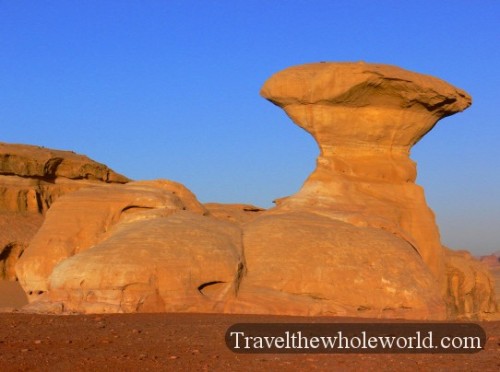 Wadi Rum – A desert in Jordan that also is shared by Saudi Arabia, Wadi Rum is an excellent place to view sand dunes, impressive rock formations and desert wildlife in the middle east. Wadi Rum is a very large area, so there are plenty of camping options available which will give you an idea of what the desert life is like. Many people enjoy hiking in the day and taking part in off roading through the sand dunes, then at night enjoying a feast around the camp fire.
Wadi Rum – A desert in Jordan that also is shared by Saudi Arabia, Wadi Rum is an excellent place to view sand dunes, impressive rock formations and desert wildlife in the middle east. Wadi Rum is a very large area, so there are plenty of camping options available which will give you an idea of what the desert life is like. Many people enjoy hiking in the day and taking part in off roading through the sand dunes, then at night enjoying a feast around the camp fire.Kazahkstan
Capital – Astana – Formerly called Aqmola and Tselinograd, Astana is an old city in Central Asia that replaced Almaty as the country’s capital in the late 1990s. Since then, the city has begun to modernize itself while still keeping its old traditional neighborhoods and some of its Soviet style buildings. There are plenty of places to see like the the giant Khan Shatyry tent, Baiterek Tower, Palace of Peace and Reconciliation, and the outdoor museum Atameken Map of Kazakhstan. Astana isn’t known for its good restaurants and cuisine, but it does have quite a selection of night life.
Altai Mountains – Eastern Kazakhstan is separated by a natural border from China and Russia known as the Altai mountains. Several mountains here rise over 4,000 meters making a haven for wildlife and natural beauty. Some endangered animals that live here include the snow leopard and the Altai Algari. The area is also known for skiing in the winter and hiking and mountain climbing in the summer.
Almaty – Although no longer Kazakhstan’s capital, Almaty remains the country’s largest city and has lots to do for travelers and expats who live in the city. Some sites include the 28 Panfilov Heroes Memorial Park, Republic Square, and the presidential palace. Somehow Almaty is one of the world’s most expensive cities, so a downfall to visiting is the expensive restaurants and hotels that you’ll be staying in. If you have the extra cash, then enjoying ice skating, ski resorts, saunas, and koke Tobe tram are fun things to do within the Almaty area.
Caspian Sea – The world’s largest lake is located at the borders of Europe, Central Asia and the Middle East. The Caspian sea is nine times the size of California and with such a large area you can imagine there are several distinct eco systems and cultures along its shores. Kazakhstan’s share of the Caspian is known for its famous city of Aktau and its nearby beaches. Aktau itself is a young city, but near by are many historical attractions such as the undergrounds mosques.
Kuwait
Capital – Kuwait City – The bustling metropolis of Kuwait City is one of the richest cities in the world filled with luxury hotels, enormous shopping malls as well as fancy restaurants and beach clubs along the gulf. Since Kuwait is a country with one of the highest GDP, many travelers will find things to be relatively expensive here but on the plus side it is a tax free country. One of Kuwait’s most famous icons are the Kuwait Towers, also the countries biggest tourist attraction.
Kyrgyzstan
Capital – Bishkek – Kyrgyzstan capital’s true history only begins in the 20th century after it grew from a caravan rest stop to a strategic city. This relatively new city lacks all the historic tales and ancient landmarks you might expect to find in Asia, but the clean modern city and the best night life in Central Asia make up for that. Bishkek is also known for maintaining its Soviet charm and brings back memories for those who grew up in the USSR. Things to do include visiting the city square, national museums, several parks and of course Bishkek’s bazaar.
Ala Archa – Kyrgyzstan’s most beautiful alpine region is located only an hour south of the capital. During the summer the area is popular for hikers, campers and horseback riding while the winter draws in skiers and mountain climbers. Altitude ranges from a few thousand feet to just over 16,000 feet Semenova Tian-Shanski peak. Deer, snow leopards, bear and other species make this place their home.
Burana Tower – Over a thousand years ago Soghdians who were from the Persian region created a settlement in the Chuy Valley. The city was built and thrived until it was conquered by the Mongols. In modern times remnants of the castle, mausoleum and the Burana Tower are all that can be see. The Burana tower once stood at almost 150 feet but through natural disasters and time it has been reduced to half that height but still remains a famous icon of Kyrgyzstan.
Lake Issyk-Kul – A true wonder and must see in not just Kyrgyzstan but all central Asia. Lake Issyk-kul is the 10th large lake in the world by volume and the second largest salt water lake in the world trailing the Caspian Sea. The lake ecosystem is rich in both flora and fauna and has provided a living for fisherman for a millennium. Ancient cities that thrived 800 years are are still being excavated today. Occasionally after large storms century old artifacts are discovered along the shore which leads people to believe the ruins of a city is somewhere under the lake.
Laos
Capital – Vientiane – Serving as the capital for over 500 years, Vientiane is also the largest city in Laos. This Buddhist city is home to dozens of temples and stupas. There is even a day once a month where monks gather at the Sangha College to speak with students and foreigners. A must see is the Buddha park where there is a collective of large statues that include mythical animals and creatures.
Ban Nalan Trail – The northern country side of Laos is best experienced by hiking the two day trek via the Ban Nalan Trail. Not only does the trail pass by and through various rivers and forests, there are several tiny villages to stop at for meals and for a nights stay. Within the villages you can get a first hand experience of the Khmu culture and learn about their traditions and ways of life.
Luang Prabang – A small and charming town that offers a little bit of everything for the Laotian traveler. Beautiful temples and traditional houses and even a royal palace are places to visit in Luang Prabang. The town also is known for its busy markets and daily ceremonies which are always open to travelers. As Luang Prabang is set against the backdrop of lush rugged mountains there are several nearby hiking trails and waterfalls nearby, and even an Asiatic bear sanctuary!
Plain of Jars – Scattered across the Xieng Khouang plateau you’ll find thousands of megalith jars that archaeologists estimate could be up to 2,000 years old. There are over 90 sites that include the jars, with some have only a few while others have several hundred in the same location. They come in all shapes and sizes and bear the marks of past wars the tiny country has seen. Not much is known about the creation of the jars, but some believe that they might have been made in order to capture water during the monsoon seasons, and even local myths describe giants who once built them.
Lebanon
Capital – Beirut – This city was once called the Paris of the middle east but a long civil war completely destroyed the city in the 1970s. Just when Beirut was almost completely recovered, in July 2006 a one month war with Israel set the city back again. With the city quickly recovering again, the downtown area, nightlift, beach clubs and other attractions are once again bringing tourists to Beirut.
Byblos – An ancient city that was founded around 5,000 BC, Byblos is one of the oldest continuously inhabited cities in the world. Byblos was the first Phoenician city and also served as the capital for the civilization from 1200 to 1000BC. The ancient city today has the oldest port in the world, several castles and churches from the crusaders, and of course ancient Phoenician temples.
Jeita Grotto – One of Lebanon’s most beautiful places, the Jeita Grotto cave system is made up of both a lower and upper area. Jeita Grott was closed for 20 years during the civil war but reopened to the public again in the mid 90s. Today it is a very popular tourist attraction for both Lebanese and foreigners, and therefore has many other activities in the area. The most popular are taking a cable car ride through the mountains, or a boat ride in a subterranean lake in the caves.
Tripoli – Tripoli is a culturally rich and historic city located on Lebanon’s northern shore. The city is full of ancient palaces, historic castles, mosques, cathedrals and its famous old city. The city is also one of the few places in the world where you can still enjoy a pagan festival! Aside from the amazing culture Tripoli offers, the are plenty of beautiful beaches and islands to explore. Some uninhabited islands are even nesting areas for two different species of sea turtles and dozens of migratory birds.
 Capital – Kuala Lumpur – Malaysia’s capital has grown from a small village to one of the largest most modern cities in the world in less than two centuries. At one point the Petronas Towers where the highest buildings in the world at 1482 feet. The rest of the city is filled with equally impressive mosques, Bhuddist and Hindu temples. The national zoo, huge shopping districts and the all night entertainment means you can never have too much time in Kuala Lumpur.
Capital – Kuala Lumpur – Malaysia’s capital has grown from a small village to one of the largest most modern cities in the world in less than two centuries. At one point the Petronas Towers where the highest buildings in the world at 1482 feet. The rest of the city is filled with equally impressive mosques, Bhuddist and Hindu temples. The national zoo, huge shopping districts and the all night entertainment means you can never have too much time in Kuala Lumpur.Gunung Mulu Park – On the third largest island in the world is the Gunung Mulu park. This mountainous rainforest is a world heritage site because of its great geological rock formations and its huge biodiversity of wildlife. What makes this forest even more amazing, is the giant Mulu cave which has the largest enclosed space in the world. The cave is home to some of the most unique wildlife on the planet, where thousands of insects live permanently without any sunlight.
 Penang – An island among the straights of Malacca, a visit to Penang will show you a little bit of everything from Malaysia. Tall buildings, religious temples, and tropical beaches are all found on the island. Among the religious structures, Kek Lok Si is the largest Buddhist temple in the country. A 3.5 mile hike to the top of Penang hill will give you an amazing view of the entire island. Scuba diving and snorkeling are also great here in Penang.
Penang – An island among the straights of Malacca, a visit to Penang will show you a little bit of everything from Malaysia. Tall buildings, religious temples, and tropical beaches are all found on the island. Among the religious structures, Kek Lok Si is the largest Buddhist temple in the country. A 3.5 mile hike to the top of Penang hill will give you an amazing view of the entire island. Scuba diving and snorkeling are also great here in Penang.Taman Negara Park – Untouched by previous ice ages and avoiding the nearby active volcanoes for tens of thousands of years, the rainforest of Taman Negara Park is the oldest primary rainforest in the world. It is so dense, that it’s possible to be only a few feet from a large animal and not even notice it. The park is very difficult to reach, and is best to fly to and spend your nights camping in the wilderness.
Maldives
Capital – Male
Mongolia
Capital – Ulan Bataan
Nepal
Capital – Kathmandu
Mt. Everest
 Capital – Pyongyang – One of the most unique capitals in the world, Pyongyang is a country that has been closed off to the rest of the world over half a century. Since North Korea has intentionally isolated itself from most nations, a visit to the capital leaves it free of all western influences and has preserved its culture. Pyongyang is probably the only capital city in the world where you’ll not find a McDonalds, or any western movies or music on the streets.
Capital – Pyongyang – One of the most unique capitals in the world, Pyongyang is a country that has been closed off to the rest of the world over half a century. Since North Korea has intentionally isolated itself from most nations, a visit to the capital leaves it free of all western influences and has preserved its culture. Pyongyang is probably the only capital city in the world where you’ll not find a McDonalds, or any western movies or music on the streets.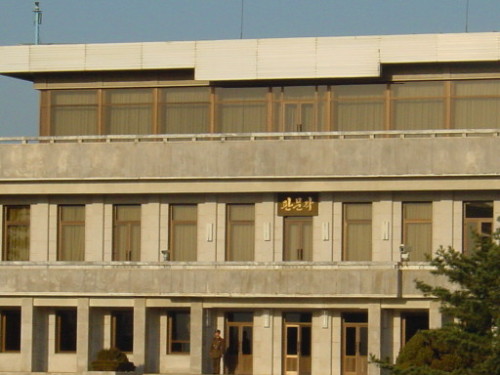 DMZ – The 155 mile long border that runs across the Korean peninsula separating the north and south, is the most fortified military border in the world. Since 1953, the border has been maintained while both North and South Korea technically remain at war. Occasionally small exchanges of gunfire still occur, but this does not stop the tours available from both sides from running. A visit to the DMZ will allow you to visit the negotiation rooms, watch towers, and explore secret underground tunnels.
DMZ – The 155 mile long border that runs across the Korean peninsula separating the north and south, is the most fortified military border in the world. Since 1953, the border has been maintained while both North and South Korea technically remain at war. Occasionally small exchanges of gunfire still occur, but this does not stop the tours available from both sides from running. A visit to the DMZ will allow you to visit the negotiation rooms, watch towers, and explore secret underground tunnels.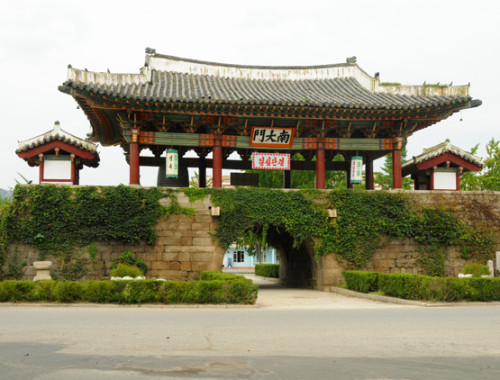 Kaesong – An ancient capital of North Korea, Kaesong is a unique place in the country in modern times and is located right across the border of South Korea. Kaesong is about the only place where South Koreans and North Koreans actually meet each other for political and business reasons, but it is not freely open to traffic. The old town section of Kaesong is said to be the best preserved ancient city in both the Koreans, but maybe difficult to visit.
Kaesong – An ancient capital of North Korea, Kaesong is a unique place in the country in modern times and is located right across the border of South Korea. Kaesong is about the only place where South Koreans and North Koreans actually meet each other for political and business reasons, but it is not freely open to traffic. The old town section of Kaesong is said to be the best preserved ancient city in both the Koreans, but maybe difficult to visit.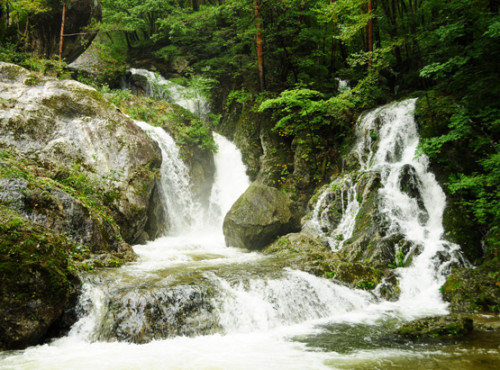 Myohyang – One of North Korea’s most sacred places, Myohyang is a small mountain located in the north western parts of the country. Mt. Myohyang is home to several hermitages and the nationally famous Pohyon Temple which was built in the 11th century. Inside the temple is an ancient Buddhist pagoda, the 7th national treasure of North Korea. The mountain itself has several hiking trails that lead to the top and provide some excellent views of the surrounding towns.
Myohyang – One of North Korea’s most sacred places, Myohyang is a small mountain located in the north western parts of the country. Mt. Myohyang is home to several hermitages and the nationally famous Pohyon Temple which was built in the 11th century. Inside the temple is an ancient Buddhist pagoda, the 7th national treasure of North Korea. The mountain itself has several hiking trails that lead to the top and provide some excellent views of the surrounding towns.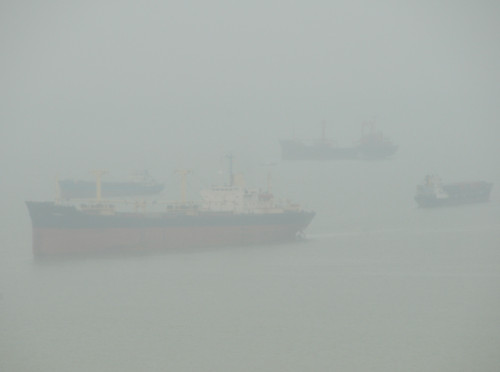 Nampo – Nampo is North Korea’s largest seaport and is located on its western shores in the Yellow Sea. Nampo’s biggest icon is the west sea barrage, considered one of North Korea’s greatest architectural accomplishments, taking half a decade and nearly all of the country’s financial resources. Other interests while stopping in Nampo is visiting the local salt pans or a stay in one of the hot spring resorts.
Nampo – Nampo is North Korea’s largest seaport and is located on its western shores in the Yellow Sea. Nampo’s biggest icon is the west sea barrage, considered one of North Korea’s greatest architectural accomplishments, taking half a decade and nearly all of the country’s financial resources. Other interests while stopping in Nampo is visiting the local salt pans or a stay in one of the hot spring resorts.Oman
Capital – Muscat –
 Capital – Islamabad – By far the cleanest and most peaceful city in not just Pakistan but maybe even all of southern Asia. Islamabad was a planned city with engineers nice enough to make wide open streets and walkways. Despite the city having over a million people Islamabad feels more like a small quiet suburb. The city is home to several new museums, monuments and has a nice selection of restaurants. Built close to the base of the Himalayas, Islamabad offers numberous outdoor activities such as hiking, horseback riding and mountain biking.
Capital – Islamabad – By far the cleanest and most peaceful city in not just Pakistan but maybe even all of southern Asia. Islamabad was a planned city with engineers nice enough to make wide open streets and walkways. Despite the city having over a million people Islamabad feels more like a small quiet suburb. The city is home to several new museums, monuments and has a nice selection of restaurants. Built close to the base of the Himalayas, Islamabad offers numberous outdoor activities such as hiking, horseback riding and mountain biking. Karachi – With over 10,000 people per square kilometer, Karachi is easily the most dense city on earth. Frequent assassinations and an incredibly high crime rate make Karachi a nearly lawless city. Regardless of the dangers Karachi is definitely a very interesting city. The remains of several British buildings as well as ancient temples and palaces are found in all parts of Karachi. The beaches are packed with thousands of people with camel riders and snake charmers looking to impress locals. With tens of million of people Karachi also has several modern areas such as Port Grand and many international restaurants and night clubs.
Karachi – With over 10,000 people per square kilometer, Karachi is easily the most dense city on earth. Frequent assassinations and an incredibly high crime rate make Karachi a nearly lawless city. Regardless of the dangers Karachi is definitely a very interesting city. The remains of several British buildings as well as ancient temples and palaces are found in all parts of Karachi. The beaches are packed with thousands of people with camel riders and snake charmers looking to impress locals. With tens of million of people Karachi also has several modern areas such as Port Grand and many international restaurants and night clubs. Punjab – Pakistan’s eastern province that borders India is home to the country’s second largest city of Lahore. The city is unique in Pakistan as it’s the only part of the country that has a passable border between its archrival India. Largely considered the capital of Pakistani culture, Lahore is famous to dozens of important archeological sites and religious places of worship. The Badshahi mosque, Jahangir Tomb, Lahore Fort and Gate and countless other ancient places are within the city borders. Lahore is also Pakistan’s most educated city and the population is much more welcoming than Karachi.
Punjab – Pakistan’s eastern province that borders India is home to the country’s second largest city of Lahore. The city is unique in Pakistan as it’s the only part of the country that has a passable border between its archrival India. Largely considered the capital of Pakistani culture, Lahore is famous to dozens of important archeological sites and religious places of worship. The Badshahi mosque, Jahangir Tomb, Lahore Fort and Gate and countless other ancient places are within the city borders. Lahore is also Pakistan’s most educated city and the population is much more welcoming than Karachi. Northern Areas – The northern areas is another province of Pakistan that is located along the great Himalaya where you will find the world’s largest mountains. The world’s best mountaineers come here to conquer such peaks like K2 and Nanga Prabat. For the rest of us, there are plenty of places for hiking and camping where you can safely admire the snow covered Himalayan giants. These region of Pakistan is also one of the best places to view wildlife.
Northern Areas – The northern areas is another province of Pakistan that is located along the great Himalaya where you will find the world’s largest mountains. The world’s best mountaineers come here to conquer such peaks like K2 and Nanga Prabat. For the rest of us, there are plenty of places for hiking and camping where you can safely admire the snow covered Himalayan giants. These region of Pakistan is also one of the best places to view wildlife.Palestine
Capital – Jerusalem – Both the capital of Israel and Palestine, Jerusalem is shared by the two countries and have the capital split into three main sections. There is the old city where you can find all the history and religious sites, then the Arab and Israeli sections. Famous for all of its religious sites, many people forget that Jerusalem is also a busy modern city with plenty to do.
Bethlehem – The city of Bethlehem is one of the most important places in the world for Christians, Muslims and Jews. Several sites here are important for all three religious, with the famous being the church of Nativity which was built over the spot that Jesus was believed to have been born. The church is still active and is very well could be the oldest in the world.
Nablus – Arguably one of Palestine’s most beautiful cities, Nablus is located up in the mountains and is the West Bank’s most populated city. Unfortunately Nablus is a region of instability due to the conflict with Israel, so most of Nablus’s religious sites such as Joseph’s tomb and the ancient biblical city of Shechem and others are often left undiscovered by most tourists.
Ibrahimi Mosque – The Cave of Machpelah is said to be the burial place of Adam and Eve. This is the reason why Abraham himself chose to be buried in the cave as well. Sometime during 600AD a church was built which was later converted into a mosque. The mosque still stands today and is controlled by both Israel and Palestine.
Philippines
Capital – Manila
Qatar
Capital – Doha
 Capital – Moscow – Until the early 1990s, Moscow was closed off to much of the world when it was part of the Soviet Union. Now that its doors are open, tourists are free to visit Moscow and all of its treasures. The city is most famous for the Red Square, here in a small area are many famous places such as St. Basil’s Cathedral, Lenin’s tomb, the Kremlin are more. Other popular places to visit in Moscow are Gorky park, and the modern part of the city where all the night life is located.
Capital – Moscow – Until the early 1990s, Moscow was closed off to much of the world when it was part of the Soviet Union. Now that its doors are open, tourists are free to visit Moscow and all of its treasures. The city is most famous for the Red Square, here in a small area are many famous places such as St. Basil’s Cathedral, Lenin’s tomb, the Kremlin are more. Other popular places to visit in Moscow are Gorky park, and the modern part of the city where all the night life is located.Kamchatka – Most would agree that Kamchatka is Russia’s Yellowstone Park. Like Yellowstone, Kamchatka is largely a vast wilderness that has very harsh winters and cool summers and both are excellent places to view bears and other animals. While Yellowstone has the largest concentration in the world of geysers, Kamchatka has the largest concentration of volcanoes, 160 total, 29 of them active.
St. Petersburg – Said to be Russia’s most beautiful city, St. Petersburg is filled with amazing Russian architecture and quite a bit of history to go along with it. The city was Russia’s capital for over 200 years, until the Soviet Union came along when the capital moved to Moscow and St. Petersburg was known as Leningrad. The city is located in the far north not very far from the arctic circle. During the summer, the sun never fully sets, and many people go out to celebrate the ‘white night’ festivals.
Siberia – Making up over 75% of Russia’s territory, and basically occupying all of northern Asia, Siberia is the continent’s gateway to the Arctic. Siberia has some major cities in it, but is largely rural and unexplored. In July 2007, a baby wolly mammoth from the ice age was found fully preserved for about 10,000 years. Polar bears and reindeer roam the land, and in the north you can find walruses resting on giant icebergs and view many species of whales.
 Sochi – The Black Sea resort of Sochi is quite different from the rest of Russia. Relaxing on a hot beach in Sochi surrounded by palm trees contradicts Russia’s reputation of extreme cold temperatures and snow storms. Sochi is often visited by Russian president Vladimir Putin who comes to enjoy the nice subtropical weather. Scuba diving and sailing is available on the beach, while not to far away are scenic mountains that have large ski resorts for the winter.
Sochi – The Black Sea resort of Sochi is quite different from the rest of Russia. Relaxing on a hot beach in Sochi surrounded by palm trees contradicts Russia’s reputation of extreme cold temperatures and snow storms. Sochi is often visited by Russian president Vladimir Putin who comes to enjoy the nice subtropical weather. Scuba diving and sailing is available on the beach, while not to far away are scenic mountains that have large ski resorts for the winter.Vladivostok – Russia’s largest port on the Pacific Ocean, Vladivostok is somehow like Russians cities in the west but at the same time different. Vladivostok sits right on the border of North Korea and China, so has a large population of Asians which add to the culture of this city. During the Soviet Union, the country was closed off to most foreigners, but Vladivostok was closed off even to Soviets who lived outside the city. Now that the city is visitable by everyone, its beginning to prosper and become a major destination.
Volgograd – From the late 1600s to World War 2, Stalingrad has been lost and captured, risen and fallen countless times in countless battles. The city is most famous for its most recent battle during world war two. Not only was the battle a major turning point in the war against Germany, but it was one of the devastating fights in terms of destruction and human lives. The entire city was essentially destroyed,and the combination of deaths for both German and Russian soldiers is close to the two million mark. Today the city marks its history with the giant statue of mother Russia.
Saudi Arabia
Capital – Riyadh
 Capital – Singapore – The city state of Singapore is second most densely populated country in the world, with millions of people crammed in on a tiny island. Singapore is also famous for it strict laws and reputation of low crime. The downtown area of Singapore is pretty much made up of giant shopping districts in between towering skyscrapers. As Singapore is where the Indian subcontinent meets the Orient, the city is also has an Arab, Chinese, and Indian districts.
Capital – Singapore – The city state of Singapore is second most densely populated country in the world, with millions of people crammed in on a tiny island. Singapore is also famous for it strict laws and reputation of low crime. The downtown area of Singapore is pretty much made up of giant shopping districts in between towering skyscrapers. As Singapore is where the Indian subcontinent meets the Orient, the city is also has an Arab, Chinese, and Indian districts. Capital – Seoul – The greater area of Seoul has over 20 million people, giving the densely populated city a busy atmosphere similar to Tokyo. Also rich in history, Seoul has been a major city in Korea since 600BC, severing the capital of many different dynasties through out the centuries. Things to do in Seoul include visiting the many ancient palaces and festivals, indoor theme parks shopping districts, or going clubbing in the city’s downtown area.
Capital – Seoul – The greater area of Seoul has over 20 million people, giving the densely populated city a busy atmosphere similar to Tokyo. Also rich in history, Seoul has been a major city in Korea since 600BC, severing the capital of many different dynasties through out the centuries. Things to do in Seoul include visiting the many ancient palaces and festivals, indoor theme parks shopping districts, or going clubbing in the city’s downtown area.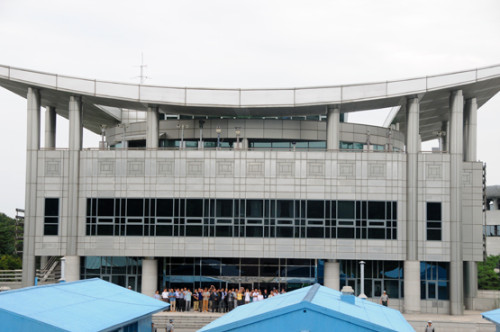 DMZ – The 155 mile long border that runs across the Korean peninsula separating the north and south, is the most fortified military border in the world. Since 1953, the border has been maintained while both North and South Korea technically remain at war. Occasionally small exchanges of gunfire still occur, but this does not stop tours available from both sides from running. A visit to the DMZ will allow you to visit the negotiation rooms, watch towers, and explore secret underground tunnels.
DMZ – The 155 mile long border that runs across the Korean peninsula separating the north and south, is the most fortified military border in the world. Since 1953, the border has been maintained while both North and South Korea technically remain at war. Occasionally small exchanges of gunfire still occur, but this does not stop tours available from both sides from running. A visit to the DMZ will allow you to visit the negotiation rooms, watch towers, and explore secret underground tunnels.Seju
Sri Lanka
Capital – Colombo
Kandy
Syria
Capital – Damascus – Continuously inhabited for almost 7,000 years, the capital of Syria is one of the oldest cities in the world. The city is surrounded by the Ghouta oasis which makes life possible in what would otherwise be a inhospitable desert. The capital is full of history and as the largest city in Syria, you won’t have a problem finding things to do.
Allepo – Allepo is another one of the oldest inhabited cities in the world and needless to say, it is rich in history and culture. Long ago it was an ancient trading city that was known to many European countries. Over the centuries earthquakes have damaged some structures but many are still standing.
Bosra – Another ancient city in Syria, Bosra was once inhabited by the Nabateans, Romans and eventually Arabs. The city has many ancient structures that are in very good condition, including the best preserved Roman theater in the world.
Krak des Chevaliers – The castle of Krak des Chevaliers is one of the best preserved medieval castles in the world. The castle was built by the crusaders and construction started around 1150 AD. Over the hundreds of years frescos painted in the castle still remain and are some of the best preserved arts from the crusaders.
Qala’at Samaan – Devoted to St. Simeon Stylites, the Basilica was built after his death in 459AD. Simoen Stylites was one of Syria’s early Christians and became famous for preaching atop some stone pillars that were up to 60 feet in height. Today the basilica is very well intact and definitely one of Syria’s highlights.
Temple of Bel – Bel was the ancient god worshiped by the Babylonians thousands of years ago which was also adopted by the Romans and named Jupiter. The Temple of Bel has a huge courtyard and in the middle the temple proper that was built in 32AD.
Taiwan
Capital – Taipei
Taroko National Park
Tajikistan
Capital – Dushanbe – Meaning “Monday” in the Tajik language, Dushanbe began as a simple Monday market place that transformed into a village of a few thousand people to the capital of Tajikistan in less than 100 years. Today Dushanbe has nearly 700,000 people and represents Tajikistan’s largest city. Famous places in Dushanbe are the Victory Park full with a beer garden and a daring gondola ride. For history and culture visit the nearby and famous 13th century Fort Hissar.
Pimirs – On the Kyrgyz and Chinese border you will find some of the highest mountains in the world. Visiting the Pamirs gives opportunities for both a cultural and some of the greatest outdoor adventures in the world. The Pamirs are dotted with traditional houses available for travelers at lost costs. During the day the mountains and wildlife are yours to explore. A famous lake that remains frozen half the year known as Karakol is a must see.
Penjikent – Penjikent is the remains of an ancient Zoroastrian civilization that is still being excavated today. Ancient statues and 2500 year old walls stand in ruins of the old Penjikent. Museums remain to give travelers details of the history and the civilizations that came and went. You will find paintings, reliefs, and other forms and arts and artifacts from several different centuries going back to times before Christ.
Samarkand – Located in the center of the ancient silk route, Samarkand is Tajikistan’s third largest city and was once one of the greatest cities of central Asia. Known for its collections of famous landmarks such as the Registran and countless tombs, mosques and tombs of famous prophets and poets.
 Capital – Bangkok – Thailand is one of the most energetic countries in the world, with both locals and tourists partying from late afternoon until early morning the next day. Bangkok has places for both party animal and those who want a quieter night out. Bangkok is by far one of the best places in the world to enjoy night life, but this is just one of many things to enjoy. The city has hundreds of temples and palaces to be explored.
Capital – Bangkok – Thailand is one of the most energetic countries in the world, with both locals and tourists partying from late afternoon until early morning the next day. Bangkok has places for both party animal and those who want a quieter night out. Bangkok is by far one of the best places in the world to enjoy night life, but this is just one of many things to enjoy. The city has hundreds of temples and palaces to be explored.Chiang Mai – Founded in 1296 by one of Thailand’s Kings, Chiang Mai is the country’s second largest city and one of the most culturally important places in the country. With over 300 temples and dozens of festivals taking place throughout the year, Chiang Mai always has something culturally significant going on.
Nakhom Pathom –
Phuket –
Turkey
Capital – Anakara –
Antalya –
Fethiye –
Istanbul – Hagia Sophia, Sultanahmet Square
Mt. Ararat –
Troy –
Turkmenistan
Capital – Ashgabat –
Derweze –
Karakum Desert –
Kugitang Nature Reserve –
Merv –
Tolkuchka Bazaar –
 Capital – Abu Dhabi – United Arab Emirates is ruled by the King Khalifa bin Zayed Al Nahyan who resides in the capital of Abu Dhabi. Settled as early as 3,000 BC, Abu Dhabi hasn’t seen much change until it recently grew to one of the richest cities in the world. Over a trillion dollars is invested into the capital, and although the nearby resort city of Dubai steals most of the attention, Abu Dhabi has many impressive sights, cultural attractions and luxury hotels of its own.
Capital – Abu Dhabi – United Arab Emirates is ruled by the King Khalifa bin Zayed Al Nahyan who resides in the capital of Abu Dhabi. Settled as early as 3,000 BC, Abu Dhabi hasn’t seen much change until it recently grew to one of the richest cities in the world. Over a trillion dollars is invested into the capital, and although the nearby resort city of Dubai steals most of the attention, Abu Dhabi has many impressive sights, cultural attractions and luxury hotels of its own. Al Ain – Considered to be the cultural capital of the country, Al Ain is located in the extreme south of the country on the border of Oman in the desert. Al Ain is UAE’s third largest city of 600,000 people, who settled in Al Ain over a thousand years ago. Al Ain has several century old forts, museums, and archaeological sites to show what life was like in the desert before modern times. Al Ain also has modern forms of entertainment such as a sports center and even an indoor ice skating rink.
Al Ain – Considered to be the cultural capital of the country, Al Ain is located in the extreme south of the country on the border of Oman in the desert. Al Ain is UAE’s third largest city of 600,000 people, who settled in Al Ain over a thousand years ago. Al Ain has several century old forts, museums, and archaeological sites to show what life was like in the desert before modern times. Al Ain also has modern forms of entertainment such as a sports center and even an indoor ice skating rink.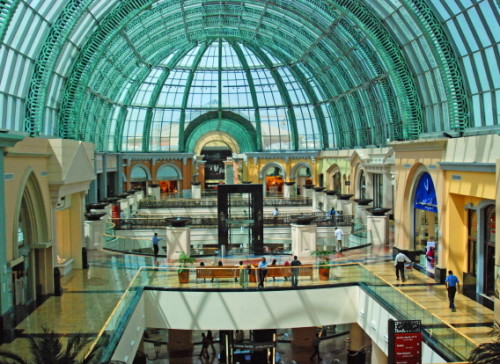 Dubai – Quickly moving to the number one tourist destination in the world, Dubai has some of the most luxurious hotels in the world with numerous others being constructed. The tourist boom in Dubai is fueling dozens of unique attractions, some include an underwater hotel to the highest building and structure in the world. Aside from the beaches and hotels, wealthy travelers also come to Dubai to enjoy activities such sailing, scuba diving and even an indoor ski resort.
Dubai – Quickly moving to the number one tourist destination in the world, Dubai has some of the most luxurious hotels in the world with numerous others being constructed. The tourist boom in Dubai is fueling dozens of unique attractions, some include an underwater hotel to the highest building and structure in the world. Aside from the beaches and hotels, wealthy travelers also come to Dubai to enjoy activities such sailing, scuba diving and even an indoor ski resort.Liwa Oasis – Experience the desert live of Arabia in one of the peninsula’s biggest oasis’s. The Liwa desert is a popular trip among tourists in UAE and has lots of activities such as hiking, camel treks, sand skiing or just off roading in the desert. Many pools make up the oasis and are surrounded by groves of date trees and sometimes even small farms owned by the local villages.
Uzbekistan
Capital – Tashkent
Vietnam
Capital – Hanoi
Da Nang
Ho Chi Minh
 Capital – Sana’a – One of the oldest and best preserved urban settlements, Yemen’s capital of Sana’a is most famous for its old city. Old Sana’a became a world heritage site in 1984, where you can visit the city’s 14,000 tower houses that reach up to 8 stories. The government has done a great job separating the old and new parts of the city, so a visit to Old Sana’a is like stepping back in time.
Capital – Sana’a – One of the oldest and best preserved urban settlements, Yemen’s capital of Sana’a is most famous for its old city. Old Sana’a became a world heritage site in 1984, where you can visit the city’s 14,000 tower houses that reach up to 8 stories. The government has done a great job separating the old and new parts of the city, so a visit to Old Sana’a is like stepping back in time. Aden – Another ancient city of Yemen, this was the capital of the southern part of the country until the north and south were reunited in 1990. Aden is the site of many important religious stories from both the Quran and the bible, and many believe that Cain and Abel are buried somewhere in the ancient city and some evil believe the Garden of Eden is here. There are dozens of ancient religious cites here, mosques, museums and plenty of interesting markets to explore.
Aden – Another ancient city of Yemen, this was the capital of the southern part of the country until the north and south were reunited in 1990. Aden is the site of many important religious stories from both the Quran and the bible, and many believe that Cain and Abel are buried somewhere in the ancient city and some evil believe the Garden of Eden is here. There are dozens of ancient religious cites here, mosques, museums and plenty of interesting markets to explore. Shibam – This small city of several thousands is nicknamed the ‘Manhattan of the Desert’ for its towering high rises that rise about the surrounding flat land. High rise apartments that reach over 10 stories may not sound impressive at first, but what makes these unique is the fact that they were built in the 2nd century, nearly 2,000 years ago. The city is considered to be the world’s first high rise skyscrapers, and has been designated a world heritage site.
Shibam – This small city of several thousands is nicknamed the ‘Manhattan of the Desert’ for its towering high rises that rise about the surrounding flat land. High rise apartments that reach over 10 stories may not sound impressive at first, but what makes these unique is the fact that they were built in the 2nd century, nearly 2,000 years ago. The city is considered to be the world’s first high rise skyscrapers, and has been designated a world heritage site. Socotra – These unique islands which are also claimed by Somalia but occupied and maintained by Yemen are one of the country’s highlights. With its amazing diving, unique endemic flora and fauna, and other wonders, one could call Socotra the Galapagos of the Middle East. The islands are a safe haven in the country so its quite easy for tourists to relax on the beach, go scuba diving or explore some of the huge cave networks.
Socotra – These unique islands which are also claimed by Somalia but occupied and maintained by Yemen are one of the country’s highlights. With its amazing diving, unique endemic flora and fauna, and other wonders, one could call Socotra the Galapagos of the Middle East. The islands are a safe haven in the country so its quite easy for tourists to relax on the beach, go scuba diving or explore some of the huge cave networks.